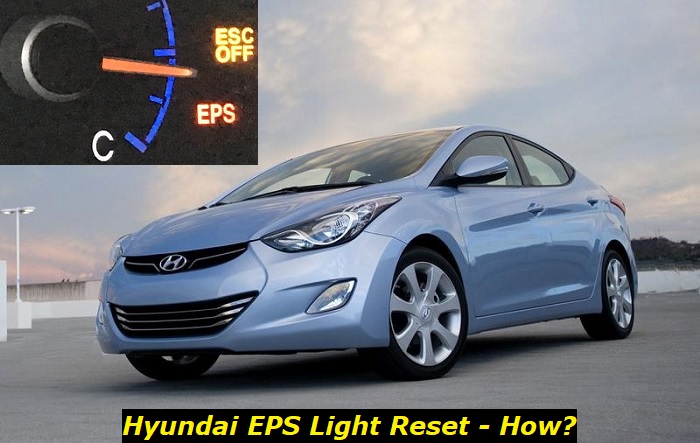Your Hyundai Elantra is pretty clever and can self-diagnose a lot of problems. It will send you a certain error message and will obviously warn you that something is wrong with the car before you are in trouble. And it's great. But sometimes, this self-diagnosing system glitches and gets on your nerves. Like with the EPS light that is sometimes hard to get off the dashboard.
EPS light highlights
- Common reasons:problems with the power steering, dying battery
- How to fix:check the battery and alternator, read the codes
- Possible consequences:you may lose power steering
- Priority level:High
- Can you drive?Not recommended
- DIY repair:Impossible
- Repair price range:$150-$1,500

What's EPS light and why is it on?
The EPS light is a special way for the vehicle to inform you that the vehicle needs your attention. This is a sign of an error in the Electronic Power Steering system. The system is pretty reliable, so many Hyundai owners will not see this light flashing at all in their vehicles. But if you are not that lucky, you can still get this problem.
When the EPS light is on, it means your car has some problem with the steering system. But it's not always that bad. You should check it first and then only think about how to reset the light. You should understand that if the warning is on the dashboard, some problem has occurred and you need to fix it first, not just make the light go off the dash.
Here's what you should do:
- Check the alternator. Your electronic power steering system relies on electricity and can only work when the electricity is supplied correctly. If the alternator is broken, it will not supply the system with the needed amount of power, and the EPS light will go on.
- Check the battery. The drained or dead battery is one more reason why the EPS warning is on. It will go on once you start your engine and it may not go off even when the vehicle turns to the alternator.
- Check the wiring. Quite often, the EPS light in Hyundai may go on when there is a problem with the wiring. This will mean that the electronic power steering can't get needed signals or power and thus stops working.
- Check the ECU. We've seen Hyundai vehicles with glitching ECUs that kept sending different messages on dashes. This actually means that you'll have to have the ECU diagnosed and maybe even replaced.
How to reset the EPS light on the dash of the Hyundai?
Well, let's suppose you've found and dealt with the problem. But to your surprise, you start the vehicle and see the EPS light flashing on again. It disturbs you from driving and just drives you crazy. But how to get rid of it?
First, think about more possible issues. A good diagnosis will be a great idea because, in most cases, the light is still on just because there is a problem.
Then, try to turn off the engine for at least 10 minutes and start the engine again. This will let you see if the error is gone. If there is no problem with the EPS system, the light should be gone.
If not, let's keep trying. You should turn off the engine, open the hood, locate your battery, and take off both cables from the terminals. This will allow you to completely reset the ECU. After 10 minutes, put on the cables again and start the car to see if this helps.
The last option is to use the diagnosing equipment to search for some codes. If you find some error codes, the next step is to try and repair the vehicle before trying to get rid of the EPS light.
This short guide will help you deal with the EPS light in your Hyundai vehicle. But you shouldn't forget that any DIY ways to deal with problems in modern cars may have consequences. Be careful with any repair actions because they may void your warranty and make it even worse for the expensive and tender modules in your car.
Final words
If you want to get rid of the EPS light in your Hyundai vehicle, try resetting it. This is as simple as that - just disconnect the battery for 10 minutes. But if you still see the EPS light after that, you may be sure that the electronic power steering system still has some problems.
About the authors
The CarAraC research team is composed of seasoned auto mechanics and automotive industry professionals, including individuals with advanced degrees and certifications in their field. Our team members boast prestigious credentials, reflecting their extensive knowledge and skills. These qualifications include: IMI: Institute of the Motor Industry, ASE-Certified Master Automobile Technicians; Coventry University, Graduate of MA in Automotive Journalism; Politecnico di Torino, Italy, MS Automotive Engineering; Ss. Cyril and Methodius University in Skopje, Mechanical University in Skopje; TOC Automotive College; DHA Suffa University, Department of Mechanical Engineering






Add comment